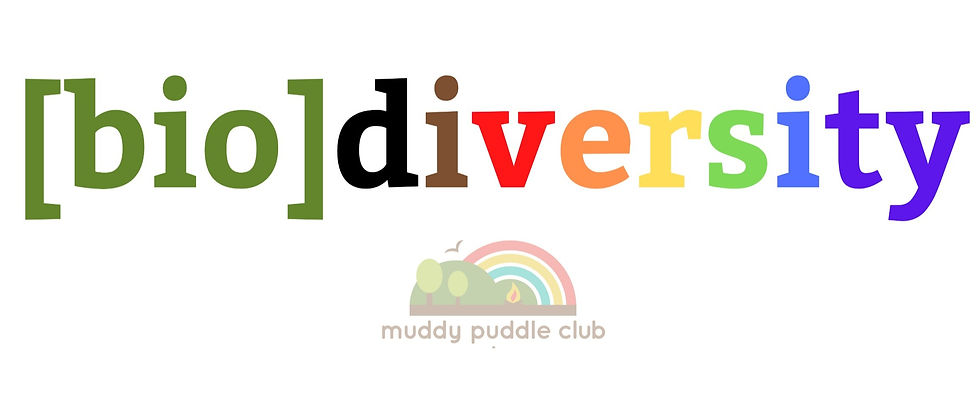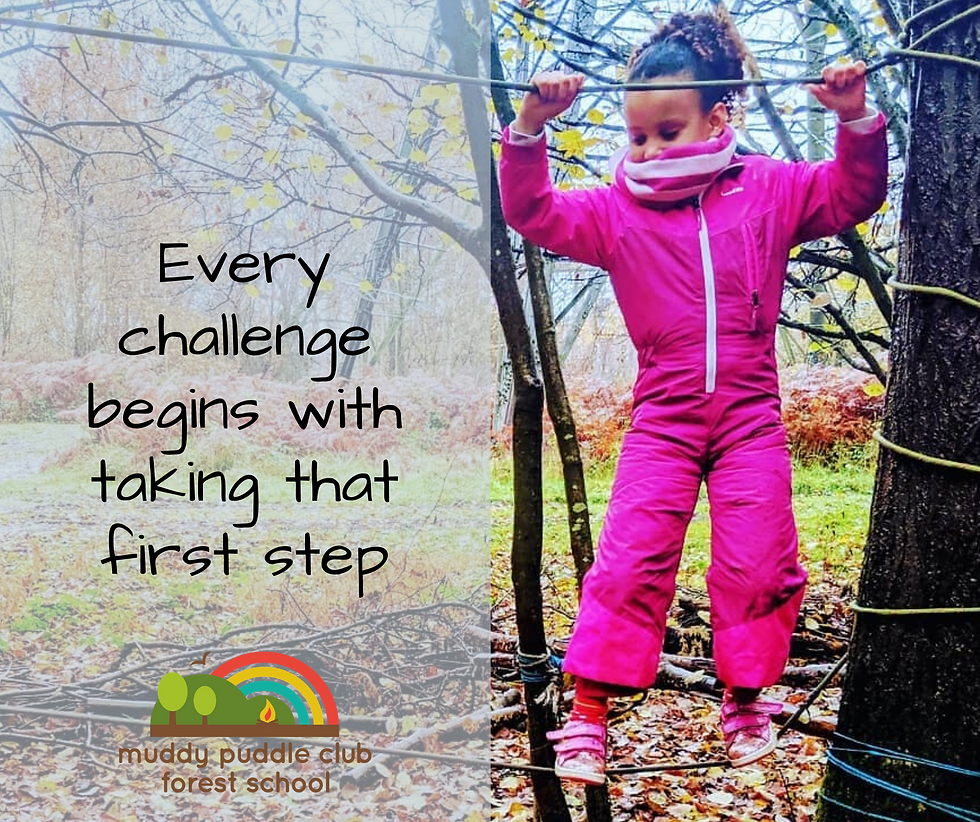Writing an Equality, Diversity and Inclusion Policy and Action PLan for your Forest School
- Lizzie

- Jun 19, 2020
- 5 min read
Updated: Jul 10, 2020
When I was researching last weeks blog post about Pride in Outdoor Learning I discovered how few Forest School setting had a separate equality policy. The ones I did find said something along the lines of 'we will include everyone regardless of their race, sexuality gender...' but didn't go as far as to say they would actively encourage and celebrate diversity within their workforce or within their groups. I found a couple from nursery Forest School settings which mentioned celebrating different cultures through food, which is wonderful. There was also a lot about inclusion of children with special educational needs, which is also great, but I strongly believe we need so much more. I looked at our own equality policy and it absolutely was not good enough so I have spent the last few weeks researching and rewriting one of our most important policies.
Why do we need an Equality, Diversity and Inclusion Policy?
The Equality Act 2010 sets out Protected Characteristics which are;
Age
Disability
Gender reassignment
Marriage and civil partnership
Race
Religion or belief
Sex
Sexual orientation
As settings and as employers it is our legal obligation to ensure that people with these characteristics are protected from discrimination. The act ensures that people are protected in a number of different ways. For example, legal obligations to make adjustments for disabled learners and staff and protection for employees on maternity leave.
Does it go far enough?
Over the past few weeks it has been, rather shockingly, brought to many many peoples attentions that treating people 'equally' is just not enough. The Black Lives Matters Movement has opened our eyes to the systematic racism faced by so so many of our friends, family and strangers every day. One of the things that stuck with me the most was this illustration.
The first image shows what inequality looks like, with no apples falling towards to oppressed minorities. The second questions what we traditionally view as equality, that by giving everyone the same tools it does not mean we are giving them the same opportunities. The third shows Equity, which is what I feel we usually do in Forest School. It gives the person on the right a higher ladder to give them more chance of success. But does it actually create systematic and long lasting change? The last shows justice, showing that if we fix the system we can give equal access to both tools and opportunities.
Charlie and I talked about this, a lot, and decided that we needed to write a new Equality, Diversity and Inclusion policy which takes us further from 'being inclusive' towards creating equity for our communities and hopefully start working towards achieving social justice and challenging systematic discrimination to all oppressed and minority groups. We also decided to write an action plan, much like a 5-year woodland management plan, but instead of a focus on biodiversity, the focus is on human diversity.

How to write an Equality, Diversity and Inclusion Policy
The first thing I did when I started to write this policy was speak to a good friend of mine, Tessa Cooper, who is the very informed and proactive voice behind Collaborative Future. She said:
'For me, policy should articulate the absolute minimum standards that organisations promise to uphold. But to truly create diverse and inclusive environments we need to go above and beyond policy and make it core to our work, no matter what type of business you run. The world of work, public services, education has all historically been designed by and for a subset of society - in order to create a world in which everyone can thrive, it is everyone's responsibility to make change happen'.
This is the attitude that underpins our new policy, procedures and action plan.
Tess also recommended a great template from Acas. The template is aimed at workplaces but we found it easy to adjust as the basis of our policy. The focus of our policy is not to just include people from different protected characteristics in our staff and our community but to actively encourage participation and provide safe and inclusive spaces where everyone feels valued. We want to go further with our training programmes and actively find ways to increase representation of minority groups and start working towards a model of social justice.
Our Policy
After writing the policy the next thing we thought about is how this will look in our sessions and how to update our handbook with procedures for implementing it. This is a vital step. Policies do nothing without procedures.
We decided to go one step further and write an action plan for our new and updated policy. As a CIC which delivers Forest School and Outdoor Learning sessions as well as training for Forest School Leaders we have a good opportunity to not only reach children participating, but also to start changing the representation in leadership roles. This will look different for every company and practitioner and it is also important to speak to your community about their needs. For example, we have attendees who for religious reasons feel uncomfortable not having enclosed toilets so we need to think carefully about how we make this better for them to access our sessions. Once you have looked at the community you already have, think about the barriers that are preventing more people from joining. Challenge yourself to be the change that is needed to increase involvement from families from diverse backgrounds. For us, as a training company, we have been focusing on trying to increase the number of BAME adults training as Forest School leaders. How are we going to do this? What are the barriers that are currently stopping people applying? How can we change the way we work to increase the numbers? We have also been thinking about how we can reach out across the Forest School community to support and encourage people to look at their policies and procedures and create action plans - this blog post is part of that!
Our full policy and action plan can be viewed on the policies section of our website. We have kept it simple and realistic, we want to succeed at this and will review it every year. If we are doing well we can be more ambitious and add more, if we aren't we will work harder to make sure we are part of the change. To write this plan I used guidance from the Arts Council of England which is aimed at small organisations. As with all policies it is so important that you write your own using guidance from other policy writers and experts and action plans should be written thinking about your local community, the aims of your policy and the reach that you have.
I hope this blog post about writing Equality, Diversity and Inclusion policies is helpful and gets you thinking about what you can be doing in your setting to work towards social justice changes. Below I have included a few links which might be helpful to start your journey or enhance it. For us this is an ongoing process which we will constantly revisit and adapt, but it is also us, as a company but also as individuals, making a stronger commitment to change.
Unconscious Bias - super important: watch and read.
The Therapeutic Forest - training course we really recommend for helping create sessions accessible for physical disabilities and neuro diversity.







Hi Lizzie,
Can I congratulate and wholeheartedly endorse all you are saying about inclusion and diversity, it goes far beyond including those with special educational needs. Any policy and procedures that follow (the actions) should encompass a proactive approach to encouraging all sectors of our communities to participate, and not just contain the usual platitudes often seen in such policies without any real effort to embrace true inclusivity and diversity within our local communities . You have so eloquently and clearly laid out the types of actions any good educational setting, not just Forest School, should be embracing...and even challenging the 'so-called status -quo'. White supremacy is an invidious prescence in our unconscious. And it's not just the black …